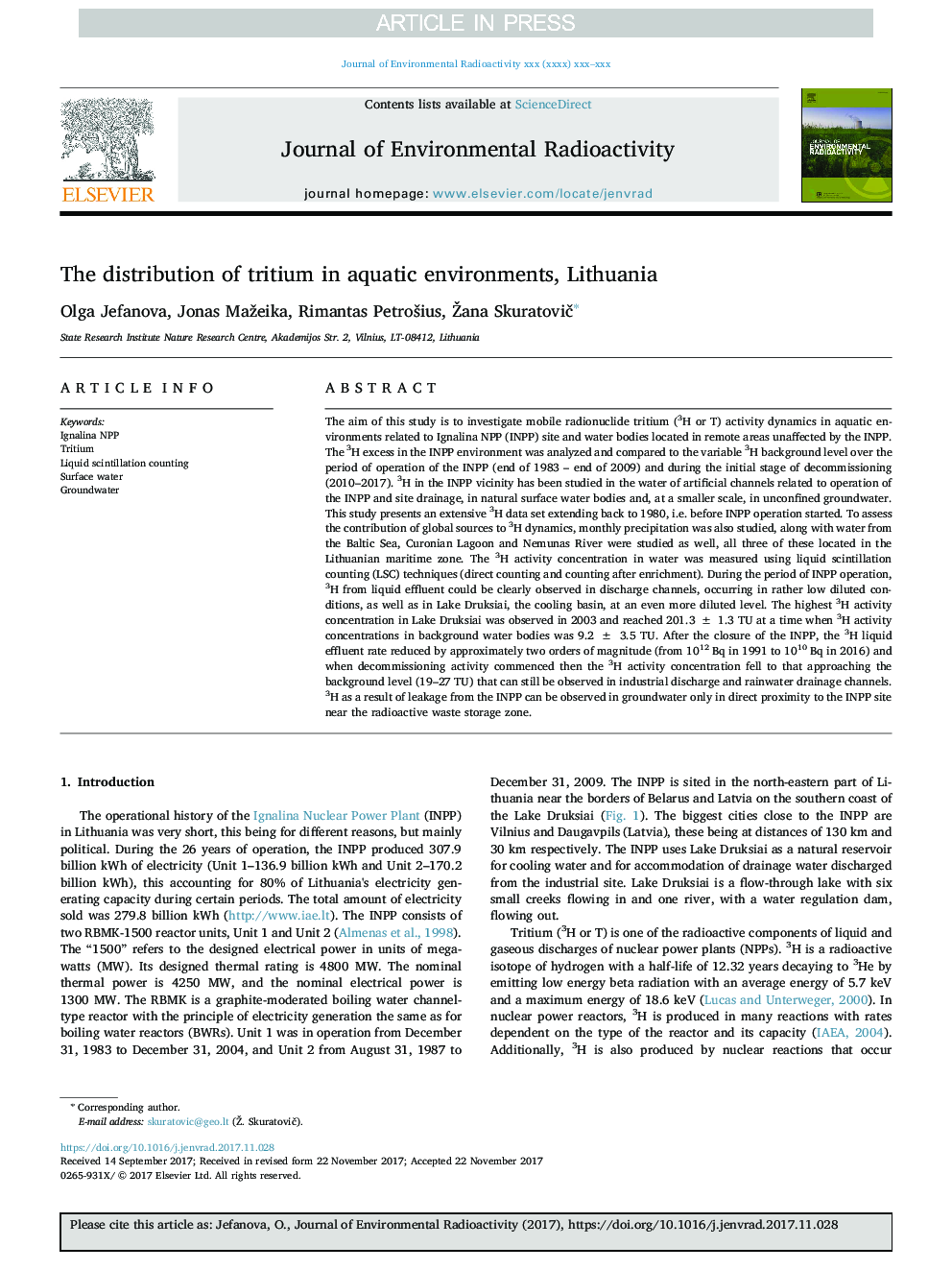| Article ID | Journal | Published Year | Pages | File Type |
|---|---|---|---|---|
| 8080523 | Journal of Environmental Radioactivity | 2018 | 7 Pages |
Abstract
The aim of this study is to investigate mobile radionuclide tritium (3H or T) activity dynamics in aquatic environments related to Ignalina NPP (INPP) site and water bodies located in remote areas unaffected by the INPP. The 3H excess in the INPP environment was analyzed and compared to the variable 3H background level over the period of operation of the INPP (end of 1983 - end of 2009) and during the initial stage of decommissioning (2010-2017). 3H in the INPP vicinity has been studied in the water of artificial channels related to operation of the INPP and site drainage, in natural surface water bodies and, at a smaller scale, in unconfined groundwater. This study presents an extensive 3H data set extending back to 1980, i.e. before INPP operation started. To assess the contribution of global sources to 3H dynamics, monthly precipitation was also studied, along with water from the Baltic Sea, Curonian Lagoon and Nemunas River were studied as well, all three of these located in the Lithuanian maritime zone. The 3H activity concentration in water was measured using liquid scintillation counting (LSC) techniques (direct counting and counting after enrichment). During the period of INPP operation, 3H from liquid effluent could be clearly observed in discharge channels, occurring in rather low diluted conditions, as well as in Lake Druksiai, the cooling basin, at an even more diluted level. The highest 3H activity concentration in Lake Druksiai was observed in 2003 and reached 201.3 ± 1.3 TU at a time when 3H activity concentrations in background water bodies was 9.2 ± 3.5 TU. After the closure of the INPP, the 3H liquid effluent rate reduced by approximately two orders of magnitude (from 1012 Bq in 1991 to 1010 Bq in 2016) and when decommissioning activity commenced then the 3H activity concentration fell to that approaching the background level (19-27 TU) that can still be observed in industrial discharge and rainwater drainage channels. 3H as a result of leakage from the INPP can be observed in groundwater only in direct proximity to the INPP site near the radioactive waste storage zone.
Related Topics
Physical Sciences and Engineering
Energy
Nuclear Energy and Engineering
Authors
Olga Jefanova, Jonas Mažeika, Rimantas PetroÅ¡ius, Žana SkuratoviÄ,
